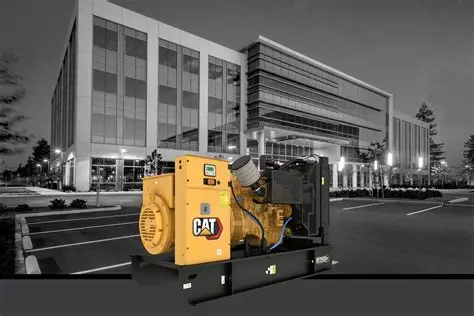The evolution of electrical protection systems has led to increasingly sophisticated approaches for safeguarding medium voltage distribution networks. While time-graded protection schemes provide reliable coordination, their inherent speed limitations—often requiring several seconds to clear faults—may prove inadequate for critical applications. Unit or differential protection addresses these limitations by offering rapid fault clearance, typically within two cycles (0.04 seconds) rather than two seconds.
This comprehensive guide explores the principles, applications, and practical implementation of unit protection systems, emphasizing their role in modern medium voltage distribution design while acknowledging their unique characteristics and limitations.
Fundamental Principles of Unit Protection
The Speed Imperative
Consider a practical scenario: a maximum fault current of 8 kA on a ring main system requires nearly two seconds for standard time-graded relay operation. While this response time falls within equipment ratings, it represents a significant delay that could be eliminated through unit protection or logic grading techniques.
Unit protection schemes offer compelling advantages:
- Ultra-fast response: Two-cycle operation (0.04 seconds)
- No grading concerns: Each section protects only itself
- Enhanced sensitivity: No coordination constraints limit settings
However, these benefits come with a critical limitation: unit protection provides no backup coverage, as each section protects only itself.
Regulatory Considerations
The Electricity at Work Regulations 1989 (Regulation 11) imposes a duty of care requiring adequate protection from excess current. This regulatory framework suggests implementing backup protection alongside unit schemes, typically through:
- Fast-acting definite time relays: Split ring systems when unit protection fails
- Time-graded backup relays: Positioned at ring heads with open ring-main parameters
Zone of Protection Concept
Unit protection schemes operate on the principle of protecting individual units or small equipment groups. The “unit” can encompass transformers, cables, generators, busbars, or device combinations. These schemes respond exclusively to faults within their defined protection zones, intentionally ignoring external faults.
Key Characteristics:
- Selectivity: Responds only to internal zone faults
- Speed: No grading margins required
- Sensitivity: Enhanced fault detection capability
- Limitation: No backup protection provision
The Merz-Price Principle
Differential Protection Fundamentals
Unit protection schemes typically employ the Merz-Price principle of differential protection, comparing current entering a protected unit with current leaving it. When these currents match in phase and magnitude, the protected unit operates normally without faults.
Basic Operating Principle:
- Normal conditions: Input current equals output current
- External faults: Current balance maintained
- Internal faults: Current imbalance triggers protection
Classification of Differential Protection
Modern differential protection encompasses four primary architectures:
- Current differential relay
- Biased or percentage differential relay
- Voltage differential relay
- Voltage balance differential relay
The latter two types rely on system balance points, presenting practical implementation challenges.
Implementation Challenges
Despite theoretical simplicity, differential protection faces several practical obstacles:
CT Matching Requirements: Current transformers must provide accurate stepped-down current images across wide overload and short-circuit ranges. Construction typically involves hundreds of secondary turns of heavy-gauge wire around iron ring-type cores, emphasizing robustness over precision.
Balance Point Positioning: Protection relays require clean, dry environments, potentially preventing optimal balance point location. System impedance variations affect CT burden and voltage characteristics, complicating precise balance achievement.
Lead Resistance Effects: CT connecting leads must carry secondary current under fault conditions, typically requiring 2.5mm² (close coupling) or 4.0mm² (up to 10m separation) conductors. Extended distances make high secondary current transmission impractical on pilot wires.
Transformer Ratio Complications: Cross-transformer protection encounters inherent current and phase differences. Primary and secondary full-load currents differ, and winding connections (typically delta primary, star secondary) introduce 30° phase shifts.
Inrush Current Instability: Transformer energization produces unbalanced inrush currents up to ten times full-load values. Three-phase voltage differences at switching moments create phase-specific current variations, potentially disrupting system balance.
High Impedance Relay Technology
Operating Principles
High impedance relays address CT saturation issues during through-faults by operating as voltage-sensing devices rather than current-operated relays. When line current transformers reach saturation during asymmetrical fault growth, magnetizing characteristic variations cause large ratio errors and circuit unbalance.
Stability Mechanism: High impedance relays operate at voltages slightly exceeding worst-case theoretical conditions for given through-fault currents. During balanced earth-fault conditions with one saturated transformer among others, the saturated unit presents low impedance parallel paths limiting applied voltage.
Design Theory
Through-Fault Conditions: Under worst-case scenarios where CT1 provides no output (complete saturation), maximum relay voltage equals fault secondary current multiplied by total circuit resistance:
V_relay = I_fault × (R_L + R_CT)
Where:
- I_fault = secondary fault current from operating CT
- R_L = total lead resistance
- R_CT = CT secondary winding resistance
Internal Fault Response: Internal faults reverse current in one current transformer, producing voltages exceeding relay settings and ensuring reliable operation.
Non-Linear Resistor Integration
High impedance relays require non-linear resistors (such as Metrosil®) across relay terminals to limit excessive voltages. These devices exhibit characteristics where doubled voltage produces dramatically increased current flow, protecting relay components while maintaining operating integrity.
Metrosil® Characteristics: I = 0.52 × [(√2 × V)/450]⁴
This relationship ensures voltage limitation while preserving protection sensitivity.
Design Example: Individual Transformer Winding Protection
Application Overview
High impedance relays provide effective balanced earth-fault (BEF) protection for primary (MV) windings and restricted earth-fault (REF) protection for secondary (LV) windings.
System Parameters:
- Transformer rating: 1000 kVA
- MV supply fault level: 100 MVA
- Configuration: Delta-star connection
Balanced Earth-Fault Protection Design
Current Calculations:
- Full-load MV current: 1000/(√3 × 11) = 52.5A
- Design current (1.5 × overload): 78.75A
- Practical CT ratio: 100:1
Relay Voltage Determination: Maximum relay voltage under worst-case conditions (two CTs saturated, one operating):
V_relay = I_secondary × (R_L + R_CT)
Class ‘X’ CT Requirements: Current transformers for differential protection must meet specific criteria:
- Equal turns ratios required
- Low secondary winding resistance essential
- Knee-point voltage ≥ 2 × voltage setting
Sensitivity Calculations: For earth-fault protection, typical sensitivity requirements fall within 15-20% ranges. Design verification ensures relay, Metrosil, and CT magnetization currents absorb all induced magnetization energy, preventing nuisance tripping from over-sensitivity.
Biased Differential Protection
Operating Theory
Biased differential protection acknowledges that CT outputs never match exactly, incorporating bias or restraining windings to compensate for inherent imbalances. This restraining action corrects theoretical imbalances while maintaining protection integrity.
Through-Fault Operation: CT circulating current flows through bias coils with any imbalance affecting the operating coil. Predominant bias torque prevents operation while automatically increasing with fault current magnitude, maintaining sensitivity without nuisance tripping.
Internal Fault Response: Internal faults energize only one CT set, circulating through half the bias coils. Reduced bias torque proves insufficient to restrain relay operation, ensuring fault clearance.
Transformer Application Considerations
CT Connection Challenges: Delta-star transformers present unique challenges:
- √3 current magnitude difference between line and winding currents
- 30° phase shift between primary and secondary currents
Solution Approach: Connect delta-winding CTs in star configuration and star-winding CTs in delta arrangement, compensating for both magnitude and phase differences.
Bias Setting Calculations: For a 2 MVA, 11kV/400V transformer:
- Primary current: 105A (157.5A with overload)
- Secondary current: 2887A (4174A with overload)
- CT ratios: 200:1 (primary), 4000:0.58 (secondary)
- Maximum current difference: 0.26A (26% for 1-ampere relay)
Typical bias settings range from 10-50% in 10% increments, with 30% proving acceptable for this application.
Feeder Cable Protection
Traditional Challenges
Pre-digital relay era presented two significant obstacles:
- Distance limitations: Circulating current transmission over extended distances
- Cost considerations: Three-phase systems requiring individual phase protection
Summation Transformer Solution
Traditional solutions employed summation transformers combining separate phase currents into single voltages for long-distance comparison via telephone lines or low-current transmission.
Operating Principle: Summation ensures output under all fault conditions, comparing currents at each feeder end:
- Through-faults: Equal currents produce no relay response
- Internal faults: Unequal currents trigger the protection operation
Variable Sensitivity Design
Summation transformer sections (A-B, B-C, C-N) employ different turn ratios, with C-N typically having greater turns. This configuration provides fault-type-specific sensitivity:
Sensitivity Examples (Translay System):
- Phase A to neutral: 19% (N=3), 10% (N=6)
- Phase B to neutral: 33% (N=3), 17% (N=6)
- Phase C to neutral: 33% (N=3), 17% (N=6)
- Phase to phase: 58% (N=3), 29% (N=6)
Modern Digital Implementation
Contemporary digital relays overcome traditional limitations through:
- Enhanced communication: Digital signal transmission
- Integrated protection: Multiple functions within single devices
- Improved coordination: Sophisticated logic and control capabilities
System Integration and Backup Protection
Backup Protection Philosophy
Unit protection’s lack of backup coverage necessitates supplementary protection schemes. Typical implementations include:
Ring Splitting Approach:
- Primary backup: Definite time relays (0.5-1.0 second delay)
- Secondary backup: IDMT relays coordinated with primary backup
- Operational sequence: Split ring first, then isolate failed section
Closed Ring Main Applications
Design Parameters:
- Summation ratio: N = 3
- Fault sensitivity: KS = 1.0
- Time performance: Kt = 20
Line Charging Current Verification: For resistance-earthed 11kV systems, minimum sensitivity must exceed 3.2 times line-charging current. With 250:1 CT ratios and 19% phase-A sensitivity, primary current corresponds to 47.5A, requiring line-charging current below 14.8A.
Cable Sizing Implications: XLPE cable capacitance data suggests 70-95mm² conductor sizes for typical building services applications, with 95mm² cables (0.33 μF/km capacitance) providing adequate margins.
Speed Performance Comparison
Unit protection offers dramatic speed improvements over conventional time-graded systems:
Operating Times:
- Unit protection: 40 milliseconds (typical)
- Time-graded protection: 2-4 seconds (typical)
- Speed improvement: 50-100× faster response
Advanced Applications and Modern Trends
Generator Protection Integration
High impedance relays adapt effectively to generator protection, addressing stator fault conditions. Most likely faults involve insulation breakdown between phases or phase-to-earth, particularly within stator slots.
Design Considerations:
- Arc damage limitation: Neutral earthing resistors limit fault current to 5-10 amperes
- Core protection: Reduced current prevents lamination welding
- Sensitivity requirements: Low fault currents may require differential protection
Digital Relay Evolution
Modern digital and numeric relays provide extensive capabilities:
- Multiple characteristics: Various curve types within single devices
- Instantaneous elements: Easily integrated with any characteristic
- Enhanced coordination:
Conclusion
The evolution of unit protection systems marks a significant advancement in safeguarding medium voltage distribution networks. By prioritizing speed, selectivity, and sensitivity, these schemes offer unparalleled fault-clearing capabilities—often within milliseconds—minimizing equipment damage, service interruptions, and safety hazards. Whether implemented through high impedance relays, biased differential configurations, or modern digital systems, unit protection provides a robust foundation for protecting critical infrastructure.
However, the very strength of unit protection—its highly localized fault detection—also presents its greatest limitation: the absence of inherent backup protection. To address this, a holistic approach must be adopted. Engineers must integrate time-coordinated backup relays, ring-main logic, and digital control systems to ensure comprehensive system resilience. Additionally, practical implementation challenges—such as CT accuracy, inrush stability, and transformer connection compensation—require careful design and verification to maintain protection integrity.
As electrical networks grow increasingly complex and demand higher reliability, the role of differential and unit protection will continue to expand. The integration of smart relays, advanced communication protocols, and real-time analytics ensures that modern protection systems not only respond faster but also adapt intelligently to dynamic network conditions.
In summary, mastering the principles and nuances of unit protection is essential for any engineer tasked with designing or maintaining medium voltage systems. By combining deep technical understanding with sound regulatory and practical design considerations, professionals can ensure the safe, efficient, and resilient operation of today’s—and tomorrow’s—electrical infrastructure.
Ready to elevate your protection schemes?
Whether you’re upgrading legacy systems or designing new installations, understanding and implementing unit protection is crucial. Connect with our engineering team to discuss tailored protection strategies for your network—or explore our resource hub for detailed guides, tools, and application notes. Visit paragonenergynetworks.co.uk

